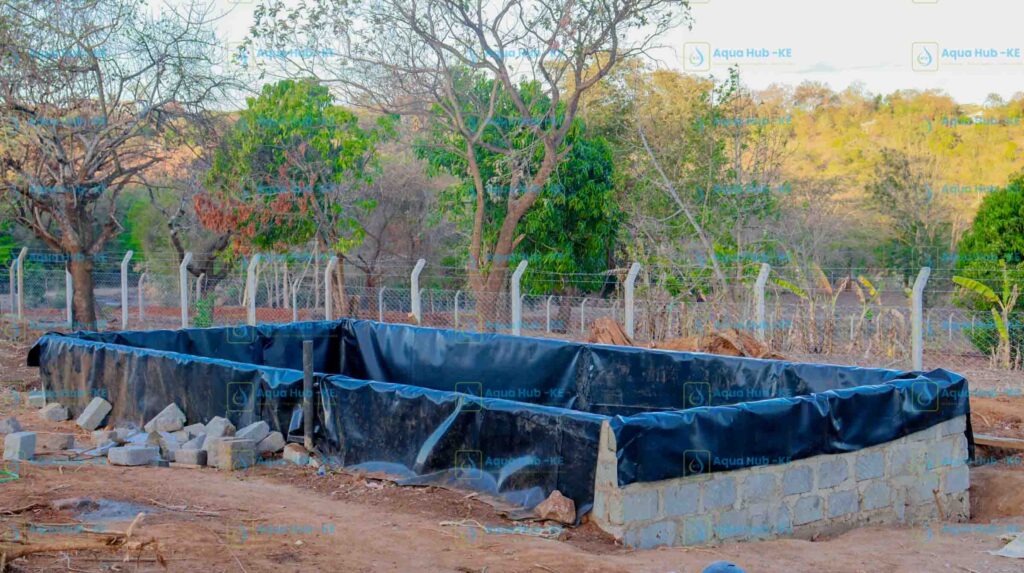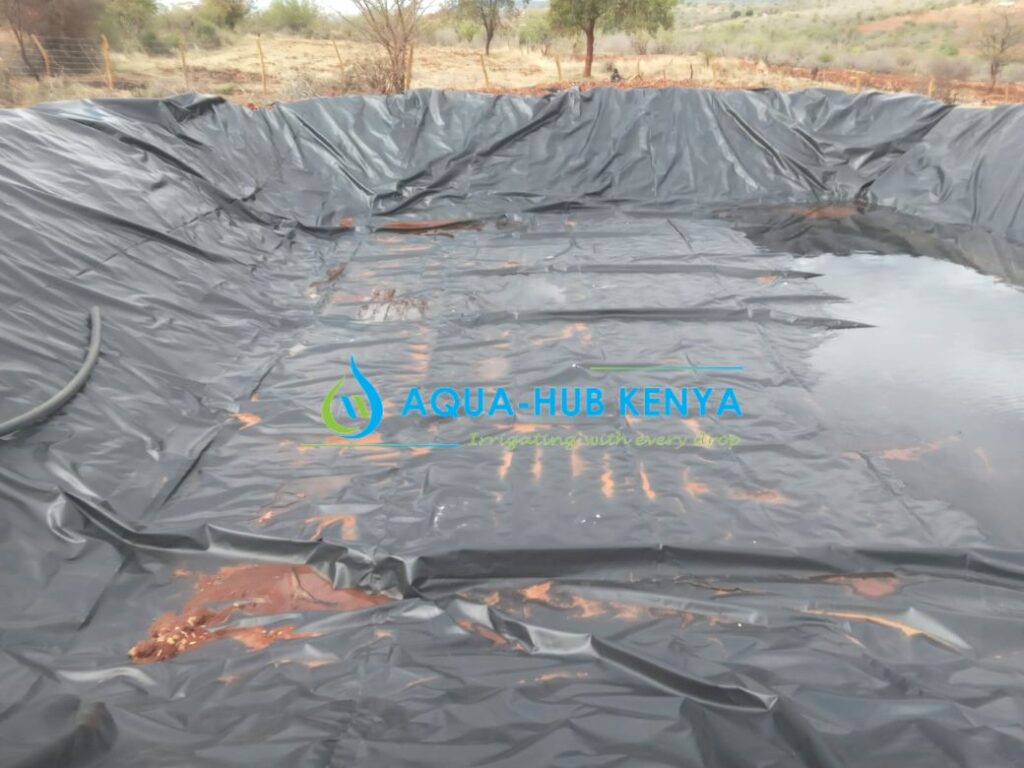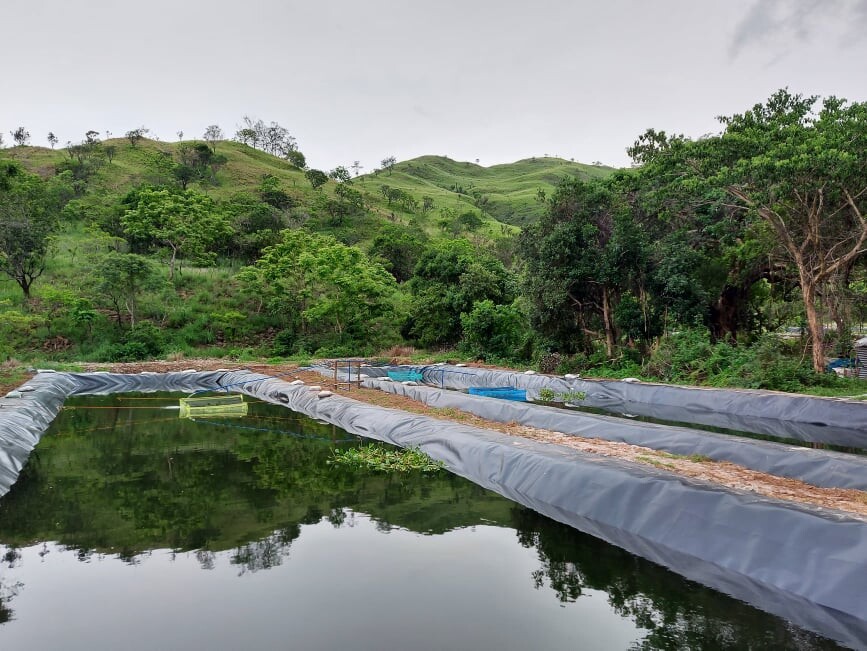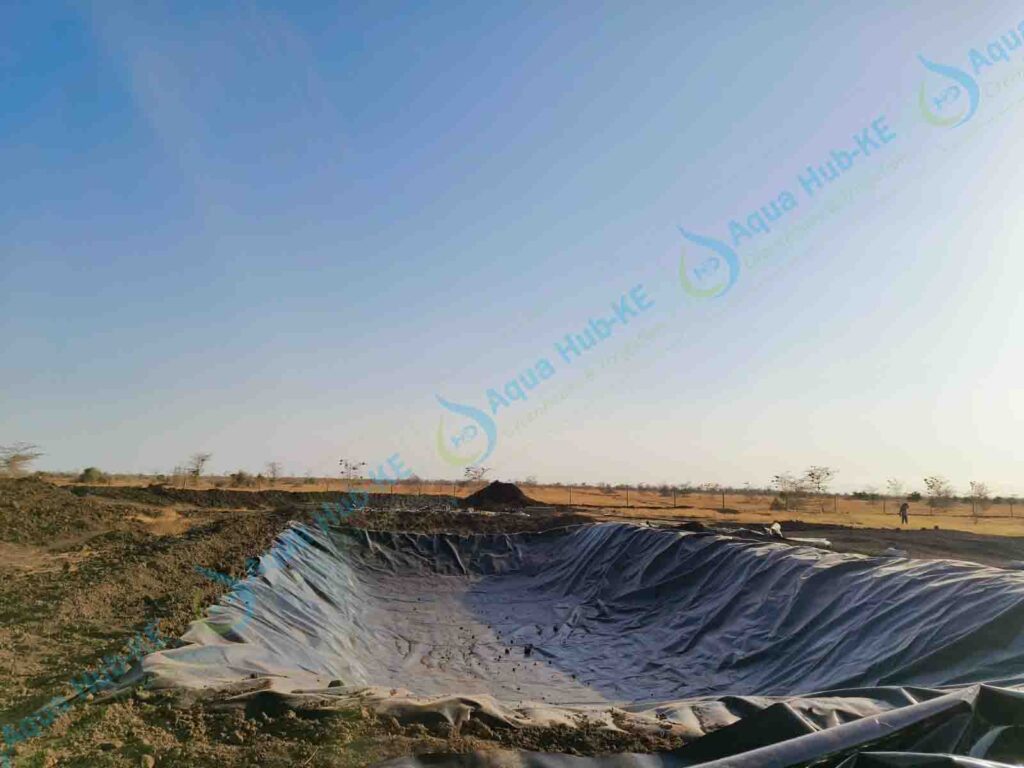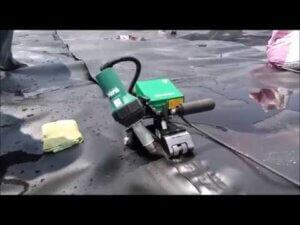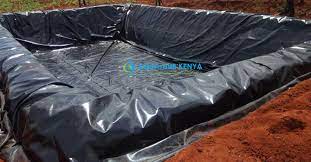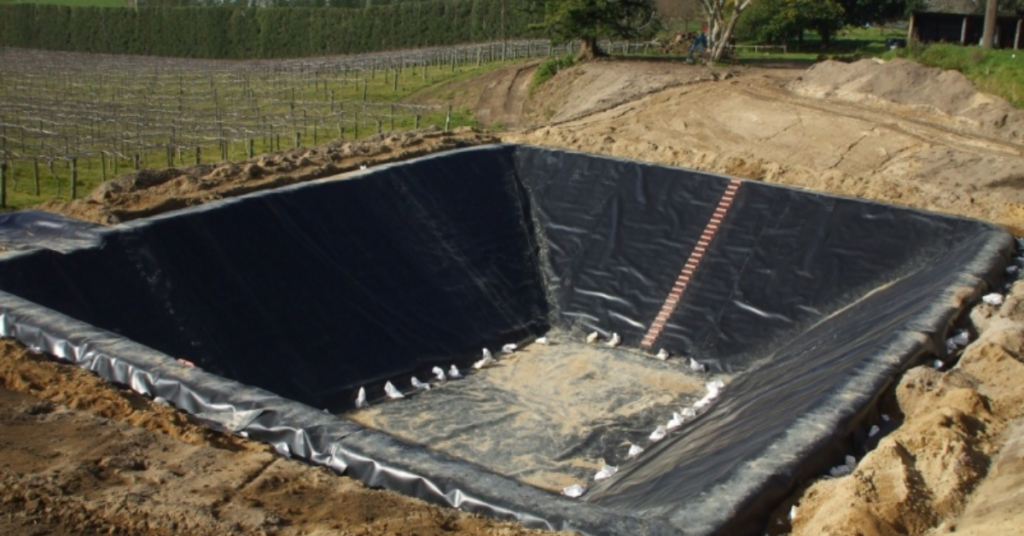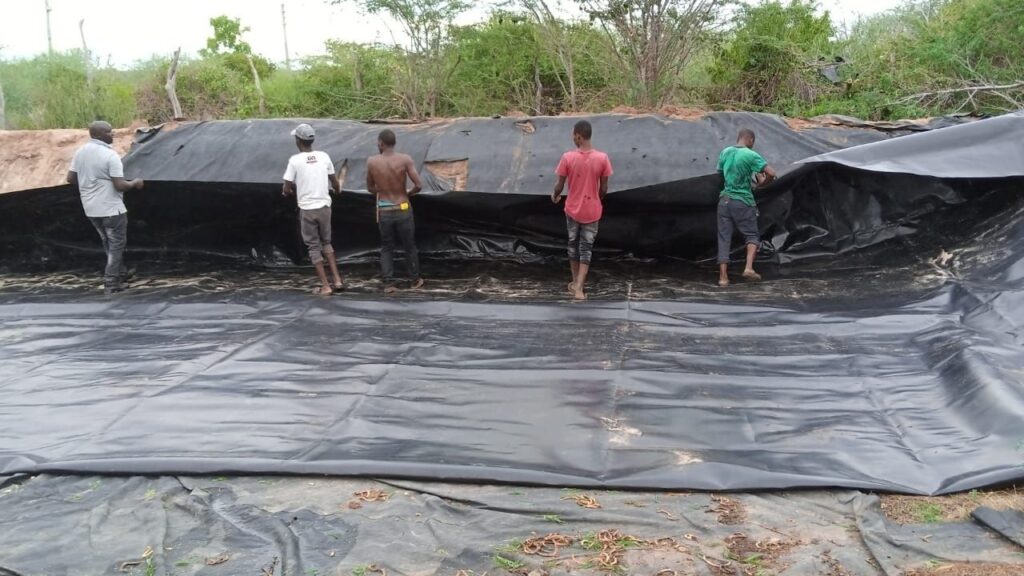Blog
Dam Liners for water harvesting: ultimate quality 2025

Climate change has resulted to low rainfall which sometimes fail or delay at the onset of critical planting seasons. Farmers, livestock keepers and household water needs require dam liners for water harvesting and sufficient supply.
The best dam liners for water harvesting in Kenya are heavy duty UV treated HDPE liners available at Aqua Hub LTD.
Learn the different types of dam liners, how much they cost and where to buy high quality dam liners in Kenya.
Quick Takeaways
- HDPE and LLDPE are the most durable and reliable dam liners for Kenya’s climate.
- Thickness matters: 0.75mm–1mm is ideal for long-term, large-scale projects.
- Proper installation is essential to avoid leaks and extend lifespan.
- Choosing a reputable supplier ensures certified quality and professional installation.
- Regular maintenance protects the liner from UV damage, animals, and sharp objects.
- Dam liners significantly improve water storage and support year-round farming.
Dam Liners in Kenya
Dam liners are structurally designed with a strong material of high gauge and waterproof nature. Being a physical barrier, dam liners are used for water harvesting in regions with highly porous soil.

dam liner installed on a water pan
Dam Liner Prices in Kenya 2025
Dam liner prices in Kenya are dependent on the thickness sizes and vary per square meter. Cost is as tabled below:
|
Thickness |
HDPE Price (KES/m²) |
|
0.3 mm |
190 |
|
0.5 mm |
240 |
|
0.75 mm |
330 |
|
1.0 mm |
420 |
Prices vary based on supplier reputation, installation support, liner quality, and whether the material meets international geomembrane standards. For large projects, customers can often negotiate discounts based on volume.
HDPE remains the most cost-effective option for long-term projects despite being slightly more expensive upfront. Farmers should avoid extremely cheap liners that may be recycled, low-quality, or uncertified since they tend to tear easily and fail prematurely.
Why Dam Liners are Best for Water Harvesting
Using dam liners for water harvesting is the best and reliable way to utilize less water in agriculture, domestic and industrial use. Below are the reasons why dam liners stand:
- Dam liners are affordable unlike other methods of water collection such as Dams or boreholes.
- With dam liners, you can store more water with lower cost compared to water tanks.
- Dam liners are easy to repair and maintain. Welding of dam liners makes them convenient for lining of large water reservoirs.
- Suitable for wide range of uses. Dam liners are not just for water harvesting but also good for handling water waste, chemicals and other fluids.
- Dam liners for water harvesting are environment friendly. They don’t contaminate or harm the water ecosystem or soil.
- The cost of pumping water is minimal when using dam liners. Only need to pump it once when irrigating crops.
When selecting the right type of liner, factors such as soil type, reservoir depth, and climate conditions must be considered to ensure optimal performance.
Importance of Dam Liners in Kenya’s Water Management
Dam liners for water harvesting play a crucial role by preventing seepage, which can waste a lot of water. Without a durable liner, even a well-constructed dam can lose up to 60% of its stored water due to porous soils common in regions like Machakos, Kajiado, Makueni, and parts of Rift Valley.
Dam liners also promote self sufficiency for farmers by making it possible for irrigation, aquaculture
Using dam liners also enhances self-sufficiency for farmers. With secure water storage, irrigation becomes possible throughout the year, livestock can access water during dry seasons, and communities can establish micro-irrigation systems or even aquaculture setups. High-quality liners especially HDPE geomembranes help maintain water purity by preventing contamination from soil pollutants. This makes them ideal for both agricultural and domestic water projects. With climate change intensifying water scarcity, dam liners remain one of the most cost-effective and sustainable solutions for Kenya’s water management challenges.
Types of Dam Liners for Water Harvesting in Kenya
Dam liners vary in gauge size, strength, resistance and pricing thus providing options for different water needs.
They fall into three main types classified according to their design material. Includes High Density polythene (HDPE) liners, Low Density Polyethylene (LDPE) liner and Polyvinyl Chloride (PVC) liners.
HDPE Dam Liners are commonly used for water harvesting and storage because of their ultimate durability, UV resistance and mechanical strength.
Here’s a quick comparison farmers can rely on:
| Type | Flexibility | Durability | Ideal Use |
| HDPE | Low | Very High | Large dams & reservoirs |
| LDPE | Very High | High | Curved dams & irregular surfaces |
| PVC | High | Moderate | Small ponds & short-term use |
Understanding these options helps farmers choose the best dam liners based on budget, climate, and intended use.
Types of HDPE Dam Liners (HDPE): Gauge
0.3 mm dam liner
- Low gauge material is often used in small water storage demands.
- For small household water needs and gutters.
- Folds easily and makes installation easy.
- Lifespan of 5 – 8 years
0.5mm Dam Liner
- Best suited for light water storage applications.
- Commonly used for small tanks, temporary storage, and household water ponds.
- Affordable and easy to install.
- Lifespan: 10 – 15 years depending on usage and exposure.
0.75 mm Dam Liner
- A medium-strength option ideal for most farmers in Kenya.
- Perfect for medium-sized dams, fishponds, and reservoirs.
- Balances durability with cost-effectiveness.
- Lifespan: 20 -25 years with proper maintenance.
1 mm Dam Liner
- The strongest and most durable option.
- Suitable for large water projects, commercial fishponds, irrigation dams, and industrial water storage.
- Designed to withstand rough terrain, heavy use, and long exposure.
- Lifespan: 30 – 45 years.
Factors to Consider When Choosing the Best Dam Liner
- Material: HDPE liners are much durable and strong compared to other types.
- Material thickness: go for the suitable thickness as per your water soil structure and water needs. High gauges tend to last long and hold more water volumes.
- UV resistance: always consider UV treated dam liners for long term performance.
- Application: depending on your application, the reliable dam liner is available. For handling harmful waste and chemicals, use a heavy duty and higher dam liner gauge. For small dams of less 500 square meters, use a low or medium gauge dam liner.
HDPE Dam Liners: Why They Are the Most Preferred in Kenya
HDPE dam liners are the industry recognized standard in Kenya due to their exceptional strength, resistance to UV rays, and long lifespan. They can withstand harsh weather conditions, heavy water pressure, and physical impacts from stones or soil movement. With a lifespan of 20–25 years, HDPE liners offer unmatched value for large water harvesting projects.
Installation of HDPE liners is typically carried out by professionals because the material requires heat welding to ensure leak-proof seams. This ensures water retention even in deep reservoirs. HDPE is also highly chemical-resistant, making it safe for irrigation, livestock, and even industrial water storage.
Recommended gauge of Dam Liners for Water Harvesting in Kenya
- 5mm liners: Best for small ponds, fish tanks, household water pits, and low-pressure reservoirs.
- 75mm liners: Suitable for medium-sized farm ponds, irrigation storage, and areas with moderate soil roughness.
- 1mm liners: Ideal for large dams, high-water-pressure storage, rocky soil, and long-term commercial water harvesting.
In regions like Makueni, Kajiado, and Isiolo where soils are dry, porous, and often filled with rocks thicker liners are strongly recommended. Thinner liners may be cheaper upfront but can easily tear, leading to costly repairs. Farmers should also consider factors such as livestock activity; areas where animals frequently access the reservoir should use thicker, animal-resistant liners. Selecting the right thickness ensures durability, reduces maintenance needs, and provides better value over the long term.
Dealers in Dam Liners for Water Harvesting

dam liners installed on water reservoirs for harvesting rain water
We stock dam liners that meet ISO and ASTM standards, ensuring durability and safety for water harvesting. Our comprehensive package includes consultation, dam liner guidance, customized sizes, and professional installation services.
At Aqua Hub LTD, we provide technical data sheets, certificate of origin and discounted prices.
Call 0790719020
How to Install Dam Liners for Water Harvesting
Proper installation is essential for ensuring the performance and longevity of any dam liner.
The first step is site preparation, which includes clearing vegetation, excavation, removing stones, and ensuring the reservoir floor is smooth. A well-prepared base helps prevent punctures and ensures uniform water pressure distribution.
Next, the liner is carefully unrolled and spread across the dam area. Because HDPE liners are rigid, professionals often use heat-welding equipment to join panels and create leak-proof seams.
Anchoring the liner then follows. The edges of the liner must be secured using anchor trenches dug around the perimeter of the dam. This prevents the liner from shifting due to wind or water pressure. In areas expecting livestock access, extra reinforcement may be added to protect the liner from being punctured by hooves. Once properly installed, the dam should be gradually filled with water to allow the liner to settle naturally. This step-by-step approach ensures maximum stability and water retention.
Common Dam Liner Installation Mistakes to Avoid
Sharp objects such as stones, roots and sticks would puncture your dam liner if not removed.
Incorrect measurement is another challenge that often results to water loss. We recommend conducting site visit before quotation and installation is done to ascertain the required dam liner size.
Improper anchoring of the liner is also a major concern. To ensure your dam liner remains in place, bury its edges on a trench 1 ft deep.
Case Study: Successful Water Harvesting in Kenya Using Dam Liners
A practical example comes from Kitui County, where a group of smallholder farmers invested in a 1mm HDPE dam liner to store rainwater for irrigation. Before installation, they were facing challenges of severe water shortages, causing crop failures during dry seasons. With the new liner, the dam was able to retain over 500,000 liters of water throughout the year.
Harvesting water with dam liners to plant high-value crops such as tomatoes, onions, and watermelons, generating consistent income even during drought months. The project also improved livestock water supply and reduced reliance on expensive water trucking. Within one year, the farmers reported a 40% increase in productivity. This case underscores the transformative impact that durable and well-installed dam liners can have on Kenya’s agricultural communities.
Environmental Impact and Sustainability of Dam Liners
Dam liners promote sustainable water conservation. They are non-harmful to the environment and therefore safe for irrigation and livestock water use.
Dam liners support climate resilient agriculture by enabling farmers store water and use it for production during dry seasons.
Frequently Asked Questions
1. Which is the best dam liner for water harvesting in Kenya?
HDPE Dam Liners from Aqua Hub LTD. UV treated and long lifespan.
2. How much does a dam liner cost in Kenya?
Prices range from KES 150 to 450 per square meter depending on thickness and material.
3. What thickness is ideal for farm ponds?
0.75mm to 1mm thickness is recommended for medium to large farm ponds.
4. Can PVC liners be used for fishponds?
Yes, but they are best for small ponds due to lower UV resistance.
5. How long do HDPE dam liners last?
With proper care, HDPE liners last 20–45 years.
6. Can dam liners be installed on a rocky ground?
Yes, but the ground must be smooth to avoid punctures.
7. Are dam liners safe for livestock water?
HDPE liners are food-grade and safe for livestock and irrigation.
8. What size of dam liner do I need?
The size depends on dam dimensions length, width, and depth must all be measured accurately.
9. Do I need a professional installer?
Professional installation is , especially for HDPE liners that require heat welding.
10. Can dam liners be repaired?
Yes, using compatible materials HDPE requires heat welding, while PVC can be patched.

